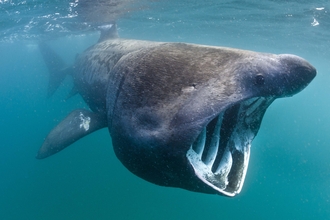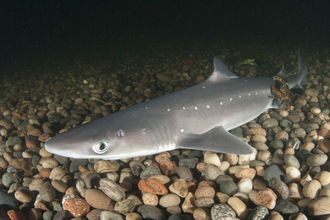
Blue shark ©Dan Bolt/www.underwaterpics.co.uk
Blue shark
It's easy to see where the blue shark got its name from. These sleek, elegant sharks have beautiful metallic blue backs which provide brilliant camouflage out in the open ocean.
Scientific name
Prionace glaucaWhen to see
June to OctoberSpecies information
Statistics
Length: 4mConservation status
Globally, the blue shark is listed as Near Threatened on the IUCN Red List. In the UK, it is a Priority Species under the UK Post-2010 Biodiversity Framework.





